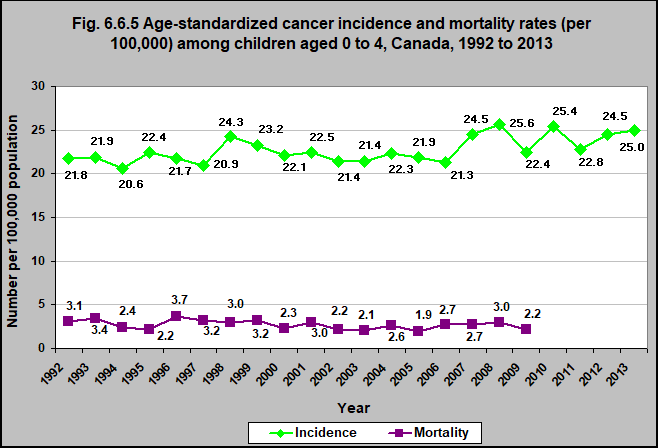Age-standardized cancer incidence and mortality rates (per 100,000) among children aged 0 to 4, Canada, 1992 to 2013

Source: CICH graphic created using data adapted from the Government of Canada Public Health Infobase. Cancer Incidence: http://infobase.phac-aspc.gc.ca:9600/PHAC/readPPReports.jsp?l=en&folder=iAE672900438C404C87AF6E1AE46F0EC3 and Cancer Mortality by Type, Age Group and Sex: http://infobase.phac-aspc.gc.ca:9600/PHAC/readPPReports.jsp?l=en-US,en;q=0.8&folder=i438F952B80014F0F85B974BF9F5A6E2B -accessed September 7, 2017.
Cancer in childhood is rare compared with cancer in adults, but cancer is the sixth leading cause of death among children aged 0 to 4 years.
For all children aged 0 to 4 years, the cancer mortality rate decreased by 29% between 1992 and 2009.
The cancer incidence rate increased by 14.7% between 1992 and 2013. Part of the increase in incidence may be explained by better diagnostic imaging or changing classification of tumors, specifically brain tumors.
Implications
It is generally agreed that different forms of cancer have different causes – and these causes are not well understood.
A number of studies indicate that environmental toxins may contribute to the development of childhood cancers. Most of these studies have been on pesticides and solvents, such as benzene.1
1Environmental Protection Agency. Children’s Health and the Environment Third Edition. 2013. https://www.epa.gov/sites/production/files/2015-06/documents/ace3_2013.pdf -accessed July 24, 2017.
